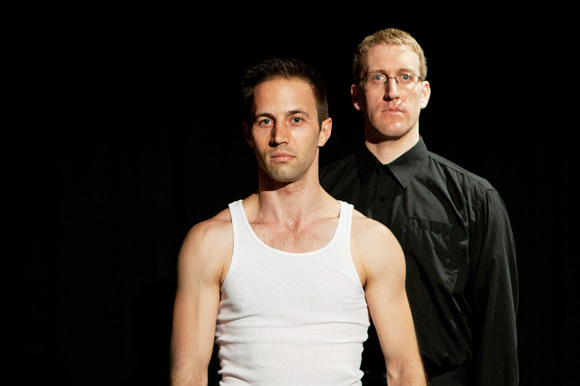
Also on the Nuit Blanche front (as per the last few posts!) today Canadianart.ca published my Q&A with one of Nuit Blanche's big honchos: Julian Sleath, programming manager of special events with the City of Toronto.
The Q&A (condensed from a 15 minute phone conversation) looks at the difficult (to many observers) fiscal and political context Nuit Blanche may be taking place in this year. Here's an excerpt:
Leah Sandals: Given the $500 million-plus that the City of Toronto is looking to trim from its budget this year, the 10% reduction in spending demanded of all city departments, and the many recent recommendations to cut funds for city-owned museums and other municipal cultural programs, it’s a tense time for many in Toronto’s arts community. What are the challenges of mounting Nuit Blanche in this type of fiscal and political environment?
Julian Sleath: Challenges? We probably don’t really know, because we’re not party to those discussions so far. We as a team have, increasingly, a 24-month planning cycle. So we’ve hired next year’s curators already. We’ve had the commitment of a title sponsor from Scotiabank till 2014. And the Special Events team are working on that basis, that we’re here to stay. At this point, I’m actually seeking proposals for 2013.
LS: Yet because you work so far ahead, you and your team must have projected the possible impacts of our city’s deficit, and efforts to eliminate it. How have you dealt with that long-term factor?
JS: Well, in our department as a whole, we’re subject to the standard and ongoing operating efficiencies. Aside from the Core Service Review, every department of the City of Toronto is under an annual challenge to decrease its expenditure by an amount set each year by the city manager. And we continue to do that, in no small part due to those commercial and branding sponsorships that we obtain. We’re extremely fortunate that we have a number of partnerships in the form of commercial sponsorship that help us sustain the program and help us look forward to a long-term future.
Sponsorship and other outside funds are providing us with 73 percent of our funding this year. This includes Scotiabank, GMC Chevy and Timothy’s Coffee, as well as the various tourism-related grants we get through the Ministry of Ontario’s Celebrate Ontario program. In alternate years, we usually get money from the Ontario Cultural Attractions Fund. We also get a significant grant from Tourism Toronto each year.
To read on for the rest, where Sleath discusses what more permanent arts institutions could learn from Nuit Blanche (I have to say I agree with him!) read on at Canadianart.ca. Also, just wanted to note I spoke with Sleath by phone on Monday, and I appreciate him taking the time to chat at such a crazy time for the festival.
(Image of revellers near Toronto City Hall during the 2009 Nuit Blanche, courtesy the City of Toronto and via Canadianart.ca)







